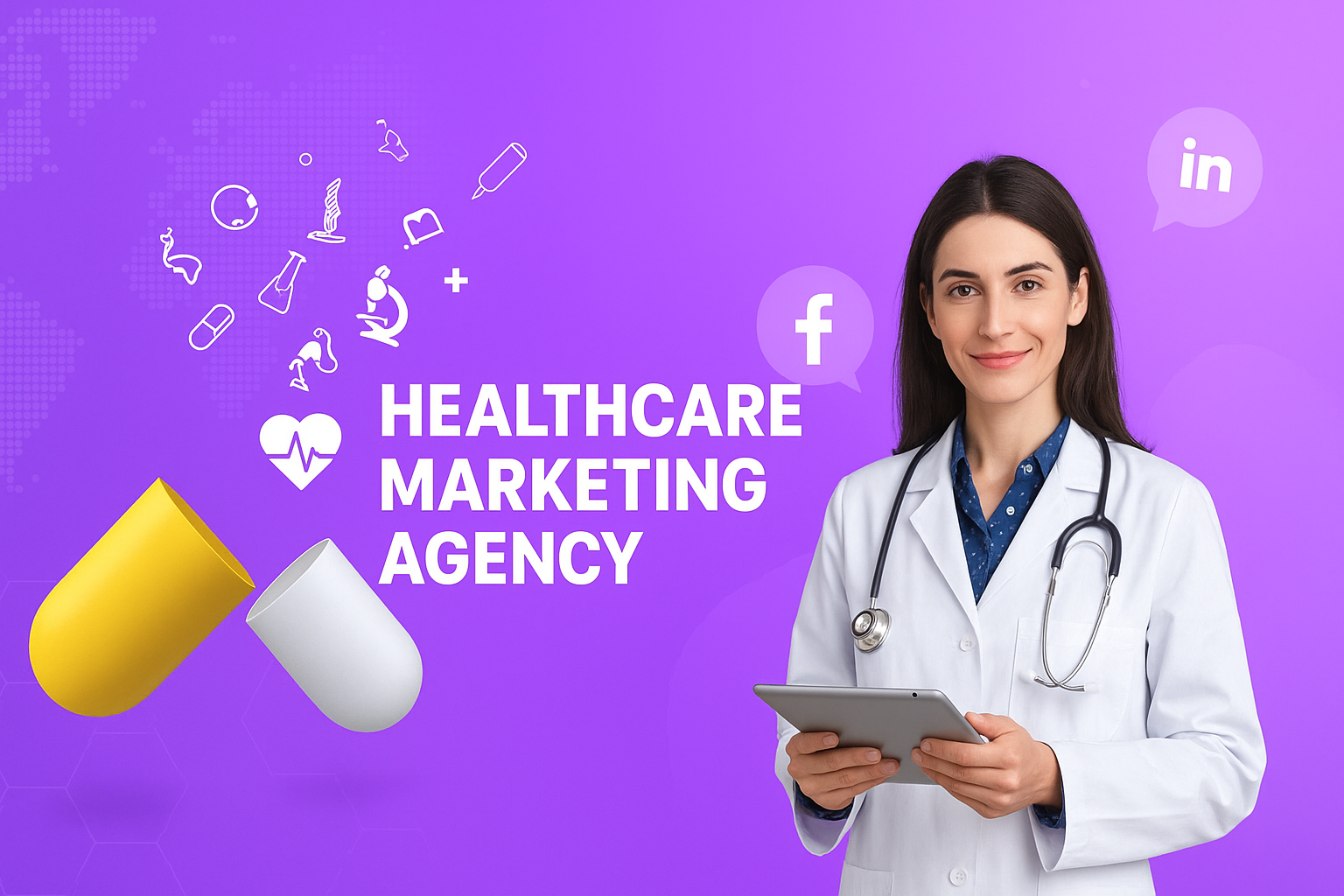In today’s competitive healthcare landscape, pharmaceutical companies whether startups or well-established enterprises must adopt effective marketing channels to reach healthcare professionals (HCPs), patients, and caregivers. However, the strategies and tools that work for a new entrant often differ greatly from those that suit an established pharma giant. The choice of marketing channels not only depends on budget and resources but also on business goals, regulations, and audience behavior.
As a healthcare marketing agency, we see that startups often require cost-effective, high-ROI tactics, while established companies can leverage multi-channel campaigns supported by larger budgets and brand trust. Let’s break down how marketing channels differ for these two categories.
1. Understanding the Pharma Marketing Landscape
Pharma marketing is not just about pushing products. It’s about building trust, educating HCPs, and engaging patients responsibly. Regulations like FDA (in the U.S.) or CDSCO (in India) set strict guidelines, meaning every message must be accurate, ethical, and compliant.
This creates both opportunities and challenges for startups and established companies:
-
Startups need to focus on visibility, awareness, and credibility.
-
Established companies prioritize market share, brand loyalty, and new product launches.
2. Key Pharmaceutical Marketing Channels
Let’s explore the most effective channels and how their role varies between startups and big players.
a) Digital Marketing
-
For Startups
Digital platforms like SEO, PPC, social media, and email campaigns are affordable and measurable. A startup can invest in targeted campaigns to reach niche audiences like oncologists in Delhi or cardiologists in Mumbai without spending millions. Search engine optimization (SEO) helps new brands appear in front of HCPs and patients who are actively searching for solutions. -
For Established Companies
Big pharma can run omnichannel campaigns, integrating websites, mobile apps, sponsored webinars, and large-scale social media advertising. They have the resources to create advanced patient portals, AI-driven chatbots, and global awareness campaigns that strengthen long-term brand presence.
b) Content Marketing
-
For Startups
Creating blogs, whitepapers, explainer videos, and infographics helps build authority in a specific therapeutic area. Startups can position themselves as thought leaders by addressing unmet medical needs and producing evidence-backed insights. -
For Established Companies
Big players already have authority. Their focus shifts to publishing clinical research, detailed case studies, and sponsored journal content. They invest heavily in CME (Continuing Medical Education) programs and patient education initiatives to reinforce trust among doctors and communities.
c) Influencer & KOL (Key Opinion Leader) Engagement
-
For Startups
Partnering with a handful of respected doctors or micro-influencers can instantly boost credibility. Startups often invite KOLs for guest blogs, panel discussions, or testimonial videos. -
For Established Companies
Pharma giants collaborate with global KOLs, sponsor international conferences, and develop long-term partnerships with medical associations. Their scale allows them to influence treatment guidelines and best practices.
d) Traditional Marketing (Print, TV, Events)
-
For Startups
Limited budgets mean startups rarely invest in television or mass advertising. Instead, they focus on local medical events, small-scale workshops, and targeted print campaigns in niche medical journals. -
For Established Companies
With bigger resources, established companies use multi-crore advertising budgets across TV, print, and large conferences like CPhI or BIO International. Their presence at these events reinforces their dominance in the industry.
e) Sales Force & In-Person Promotion
-
For Startups
Many startups operate with a lean field force, targeting specific regions or specialties. Their goal is quality interactions over quantity, building strong relationships with early adopters. -
For Established Companies
Big pharma has a massive sales force network. They can afford wide geographical coverage, frequent doctor visits, and training programs that keep medical representatives updated with product knowledge.
3. Challenges for Startups vs. Established Pharma
-
Startups face:
-
Budget constraints.
-
Limited brand trust.
-
Difficulty accessing high-profile KOLs.
-
Regulatory compliance with fewer resources.
-
-
face:
-
Slower adaptation to digital transformation.
-
Bureaucratic decision-making.
-
Higher scrutiny due to brand visibility.
-
The challenge of keeping marketing personalized at scale.
-
4. Role of a Healthcare Marketing Agency
Whether you are a small startup or a leading pharma enterprise, partnering with a healthcare marketing agency can bridge the gap between innovation and execution.
-
For startups, agencies provide cost-effective strategies like SEO, PPC, and targeted campaigns that ensure visibility without overspending.
-
For established companies, agencies help design integrated, compliant, multi-channel campaigns that maintain brand reputation while driving growth.
Agencies also bring expertise in:
-
Market research and competitor analysis.
-
Regulatory-compliant content creation.
-
Technology-driven engagement tools (automation, AI, analytics).
-
Creative storytelling that humanizes pharma brands.
5. Future Trends in Pharma Marketing Channels
-
Personalized marketing using AI: Tailoring messages to doctors and patients based on behavior.
-
Telemedicine & digital health platforms: Partnering with digital health apps for drug awareness.
-
Virtual events & webinars: Replacing costly offline conferences.
-
Patient-centric campaigns: Empowering patients with knowledge, not just promoting products.
Both startups and established companies must embrace these trends to stay relevant.
Conclusion
Pharmaceutical marketing is no longer one-size-fits-all. Startups must use agile, cost-effective digital strategies to build awareness, while iestablished pharma companes leverage their scale for omnichannel dominance. The right balance of digital innovation, KOL engagement, and patient education defines success in today’s competitive market.
By collaborating with a healthcare marketing agency, pharma businesses whether small or global can navigate regulations, choose the right channels, and achieve meaningful engagement with HCPs and patients alike.










